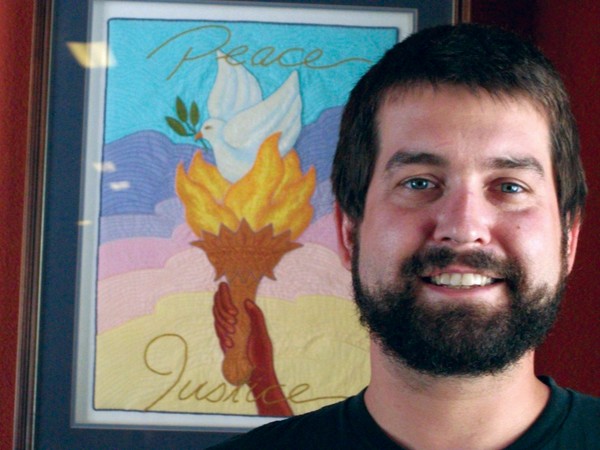Let’s start with the hate mail cartoonist Graham Sale has received over the past few years.
According to one disgruntled writer: “You have a sick depraved mind and need counseling. I know a Christian Counseling Center that can help you. I’ll be praying for you. There is a day of accountability and you need to prepare for it, Mr. Sale.”
Another wrote: “Your cartoon portraying the Lord Jesus Christ as a dark-skinned, foreign-born, anti-war liberal socialist who wants to give away health care and food to the masses in no way represents the Christ of the Bible.”
Another put it simply: “You are an idiot.”
But then there was one writer who put to him this question: “Your cartoons are so stupid. How can you accept money for them?”
Graham Sale accepted money for them because Chris Peck, former editor of The Commercial Appeal, hired him in 2010 to do weekday political cartoons and a series of cartoons called “Men in Hats” for Saturday’s editorial page.
Sale continued to do them until budget cuts at the paper led to his layoff. But here those cartoons are again, only this time they’ve been collected in three volumes — Cartoons & Illustrations, Political Cartoons, and Men in Hats: If Idiots Could Fly — and, no surprise, it’s Sale as you love or loathe him: mincemeat-maker of the GOP (and not a few Democrats), super PACs, the NRA, big banks, one-percenters, Fox News, and Bible thumpers. That’s in addition to Sale’s acute observations of life’s everyday indignities and inanities. Call those observations his gag cartoons. “A breath of fresh air amidst a swamp of paranoid bible/gun nuts” was how one fan described Sale’s political cartoons in a letter to the CA.
Sale recently also heard other kind words from a politically sympathetic Midtown neighbor: “You and Garry Trudeau were the only two people who got us through the last election cycle.”
Sale, who grew up in Elmira, New York, and graduated from Parsons, has good words for Memphis, where he’s met a number of likeminded people and where, let’s face it, the cost of living’s relatively cheap.
“I’d been in Los Angeles for 15 years. Before that, Philadelphia. Before that, New York City,” Sale said recently by phone. “But in 2010 and with the economy the way it was, I didn’t feel the need to be in L.A. Been there, done that. A friend in Mississippi said, ‘Why don’t you come here? See what Southern hospitality is like.’ I said, ‘Why not? I’ll try something different.'”
And it has been different, Sale said. The opportunities have been better than expected; the ease of meeting people a far cry from the competitive East/West Coast mob scenes. They’re scenes Sale knows very well, because in a variety of creative ventures, you name it, Sale’s done it.
In addition to licensing greeting cards, beach towels, and coffee mugs and creating Boneless Chuck (a bean-bag toy figure with a worldwide following) and a clothing line for kids called Club Crib, Sale has been a freelance advertising illustrator, an insurance salesman, a T-shirt designer (Ron Silver wore one of his shirts in Reversal of Fortune; the band UB40 wore them on Saturday Night Live), a financial planner, and self-help author of What Women Want: A Gentleman’s Guide to Romance. He’s working now on a related title called Win at Work Without Losing at Love. And what’s not to keep a cartoonist from also being a full-fledged author? Nothing, according to Sale: “You have some paper, a pen, you’re in business.”
“I read adventure stories as a kid,” Sale said. “I’ve always wanted a life full of adventure, of risk, for better or for worse.”
But it’s cartooning that’s held and still holds particular pride of place:
“People cut my stuff out and post it. It’s touched them in some way. That yellowing cartoon of mine that they’ve kept? People take it off their bulletin board when they move. They put it back up after they’ve moved. It’s the coolest thing. That’s more to me than winning a Pulitzer. That bulletin board has been the real prize.”
